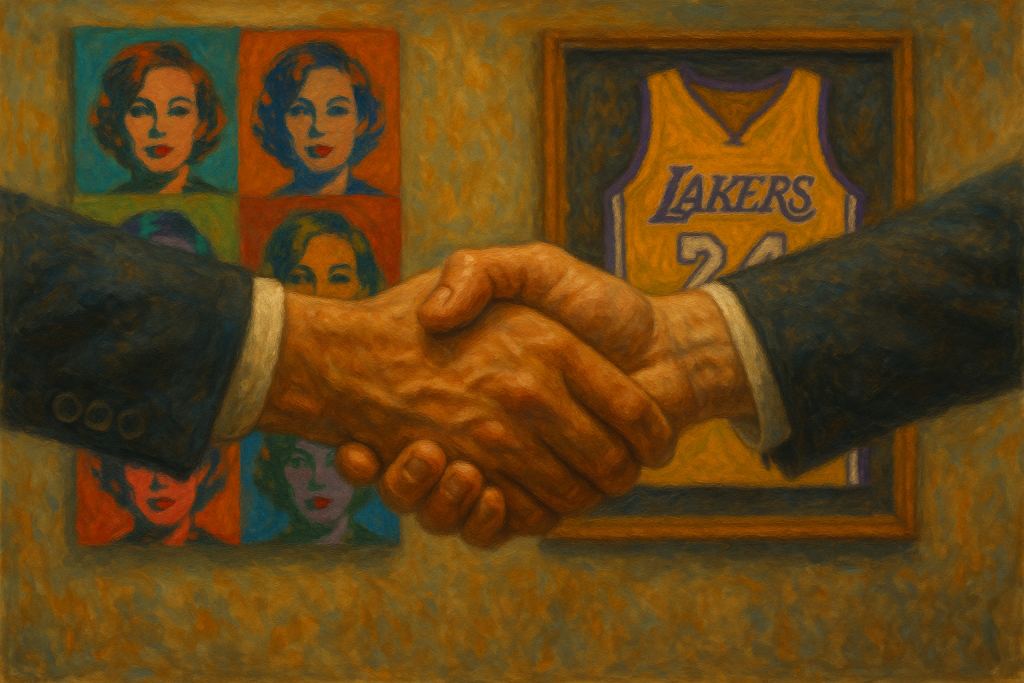Nothing raises eyebrows like a $6 million sales price for a memorabilia item. For collectors who own similar pieces, seeing such an outcome can inspire them to assess the marketability of their memorabilia while the market is hot. Perhaps they could realize similar spoils.
Before making $6 million worth of plans for the proceeds, though, collectors should consider various financial puts and takes relating to a sale. Myriad costs and fees could reduce the net proceeds to a number well below $6 million, and it’s important to understand these costs before consigning.
Auction Fees
While fees incurred by auction bidders are generally quite transparent, selling fees can be significantly more opaque and negotiable. Sellers will often pay what’s called a seller’s commission, which is typically an amount stated as a percentage of the hammer price (the winning bid before the buyer’s premium is added). This percentage can vary from house to house, and it can vary with the item’s value as well.
Consignments fuel the auction business; without great consignments, houses have little to sell to bidding audiences. For desirable collections and items, houses may get quite competitive with their terms. For other, less unique items, they may drive a harder bargain.
As this information is often less publicly available, collectors should understand the fee structures or proposals at more than one house when preparing to sell an item. While the house offering the lowest fees may be attractive, collectors should consider each option’s track record in realizing high prices for similar items. Superior performance at auction could more than compensate for higher commissions.
Still, it’s worth knowing if there are significant gaps in fees, both for negotiating purposes and to grasp the difference in net sales proceeds.
Sometimes, an item might be so desirable that an auction house will waive selling commissions altogether, opting to make money purely from the buyer’s premium. In rare instances, the auction house may even share that buyer’s premium with the seller. Houses are inclined to do this when an item is so high profile that selling it becomes a valuable marketing asset. Put differently, the fact that the house sold this high-profile item might help them attract similar consignments. As a result, they’re willing to make less money on this particular sale, as it will pay dividends in the future. Consignors should be aware when they have this type of item, and they should negotiate accordingly.
Reduced selling commissions could mean the difference of hundreds of thousands or even millions of dollars for the most esteemed items.
Auction Terms
Consignors should be thoughtful about more than just the fees when sending an item to auction. They should also consider the minimum price they’d like to achieve for their item. There are a few ways to ensure the item won’t be sold without reaching that price.
A collector can consider establishing a reserve on their property, meaning a minimum price below which the item won’t sell. While a reserve can protect a consignor from an unsatisfactory result, it’s not without risk. When items fail to meet their reserve, they often incur reputational harm and are unlikely to approach that reserve price at auction again in the short-to-medium term. In industry circles, the failure to meet a reserve is sometimes called “burning” an item. Collectors should be careful not to set an excessive reserve, and they should be mindful of a potentially reduced ability to sell the item if it fails to meet its auction reserve.
An auction house may also be willing to offer a guaranteed price for an item. Unlike a reserve, there’s reduced risk for the seller with a guarantee, as the auction house promises to purchase the work at a specific price that the seller deems acceptable. Guarantees are more common in the art world, and they’re often used as a tool to secure consignments and strengthen client relationships. In accepting guarantees, consignors may forgo some potential upside should the bidding exceed the guaranteed price, as some proportion of that upside is typically shared with the house for shouldering the risk.
Collectors may consider each of these tools depending on the situation, and both can help prevent unsatisfactory outcomes. Neither is particularly desirable when bidding activity is expected to be lively, but in more tepid market environments, a collector may prefer a safety blanket.
Transportation Costs
Terms vary from auction house to auction house and item to item, but in most situations, sellers are responsible for the packing, shipping, and insurance of their items. While those costs may seem trivial, for very valuable items, they can shave another percentage point or more off of final proceeds. Similarly, large items or artworks currently installed for display at a collector’s home may carry significant de-installation and transportation costs.
These costs are largely unavoidable, so they’re unlikely to shape a collector’s decision to sell. Nonetheless, collectors should be aware of them while trying to estimate the net proceeds of a sale. Otherwise, outcomes may vary considerably from expectations.
Eye-popping sales prices can prompt collectors into action with an eagerness to pursue similar prices for their own items. However, the difference between the sales prices that make headlines and the net proceeds to the seller can be quite significant. To avoid these surprises and maximize proceeds where possible, collectors should be mindful of these financial considerations and assess their options carefully.
Destiny Family Office works with ultra-high-net-worth collectors, offering services tailored to their investments, families, and passion assets. By understanding what’s most important to you, we can help you navigate complexity, simplify your life, and achieve peace of mind.
If you have a valuable collection you’d like to include in your financial, tax and estate planning, contact our Destiny Family Office team today. And don’t forget to self-assess your planning to date by completing our Collectibles Scorecard.




